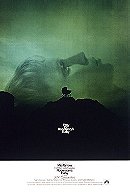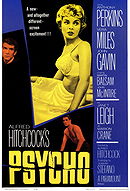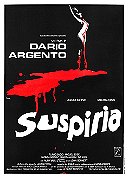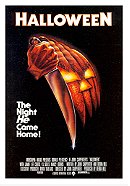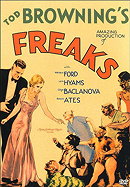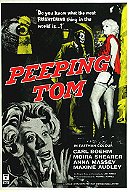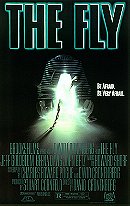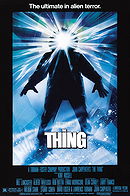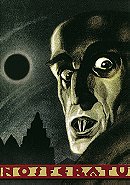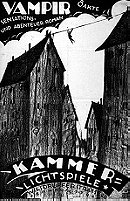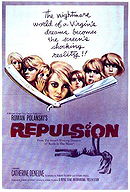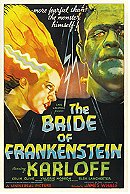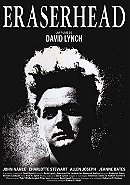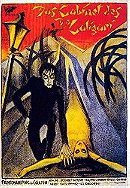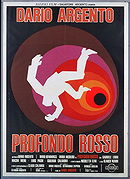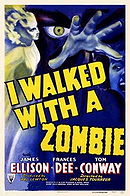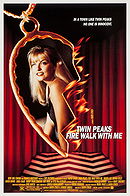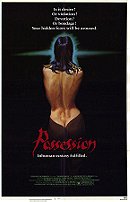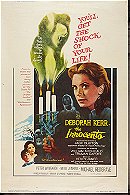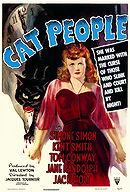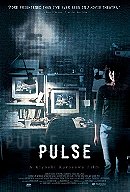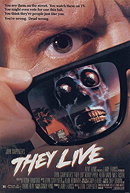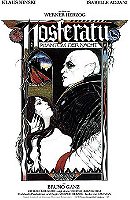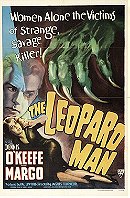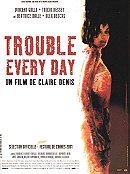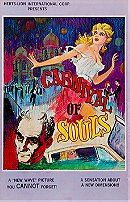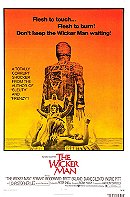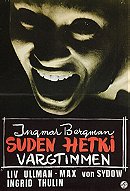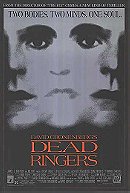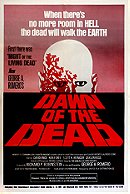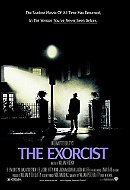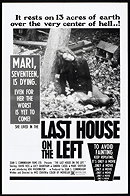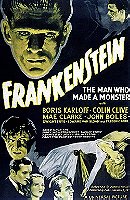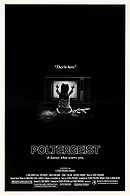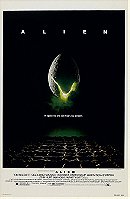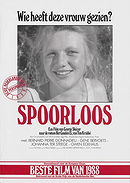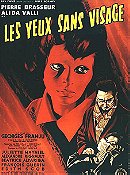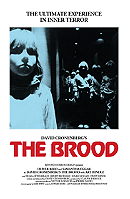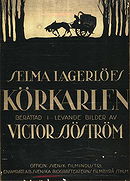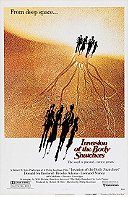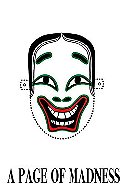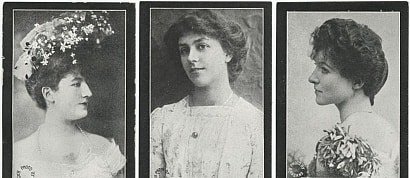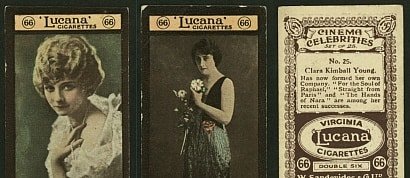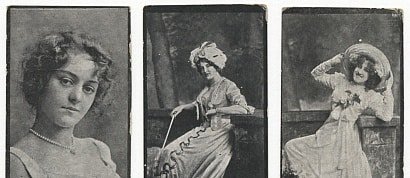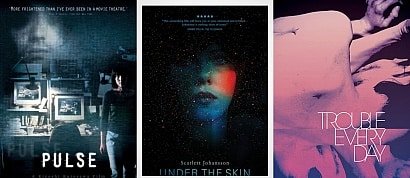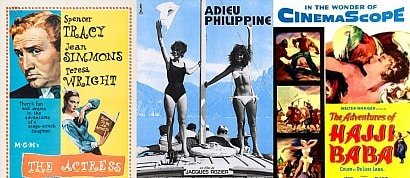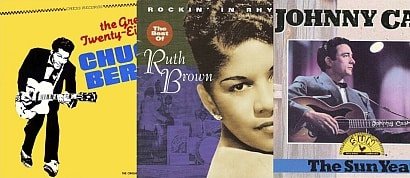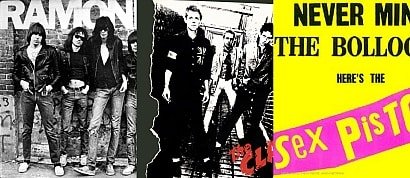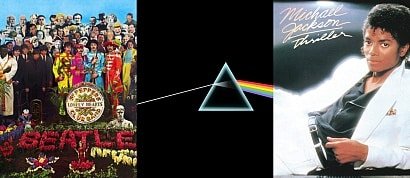Slant’s 100 Greatest Horror Films – 2018 Edition
Sort by:
Showing 1-50 of 100
Decade:
Rating:
List Type:
Publish Oct 22, 2018
The common claim of the horror film is that it allows audiences to vicariously play with their fear of death. Inarguable, really, but that’s also too easy, as one doesn’t have to look too far into a genre often preoccupied with offering simulations of death to conclude that the genre in question is about death. That’s akin to saying that all an apple ever really symbolizes is an apple, and that symbols and subtexts essentially don’t exist. A more interesting question: Why do we flock to films that revel in what is, in all likelihood, our greatest fear? And why is death our greatest fear?
A startling commonality emerges if you look over the following films in short succession that’s revelatory of the entire horror genre: These works aren’t about the fear of dying, but the fear of dying alone, a subtlety that cuts to the bone of our fear of death anyway—of a life unlived. There’s an explicit current of self-loathing running through this amazing collection of films. What are Norman Bates and Jack Torrance besides eerily all-too-human monsters? Failures. Success also ultimately eludes Leatherface, as well as the socially stunted lost souls of Kiyoshi Kurosawa’s Pulse. What is the imposing creature at the dark heart of F.W. Murnau’s Nosferatu? He makes for quite the presence, but his hungers ultimately lead him to oblivion.
So many films, particularly American ones, tell us that we can be whatever we want to be, and that people who don’t achieve their desired self-actualization are freaks. The horror film says: Wait Jack, it ain’t that easy. This genre resents platitude (certainly, you can count the happy endings among these films on one hand), but the good horror film usually isn’t cynical, as it insists on the humanity that’s inextinguishable even by severe atrocity. Which is to say there’s hope, and catharsis, offered by the horror film. It tells us bruised romantics that we’re all in this together, thus offering evidence that we may not be as alone as we may think. Chuck Bowen
The common claim of the horror film is that it allows audiences to vicariously play with their fear of death. Inarguable, really, but that’s also too easy, as one doesn’t have to look too far into a genre often preoccupied with offering simulations of death to conclude that the genre in question is about death. That’s akin to saying that all an apple ever really symbolizes is an apple, and that symbols and subtexts essentially don’t exist. A more interesting question: Why do we flock to films that revel in what is, in all likelihood, our greatest fear? And why is death our greatest fear?
A startling commonality emerges if you look over the following films in short succession that’s revelatory of the entire horror genre: These works aren’t about the fear of dying, but the fear of dying alone, a subtlety that cuts to the bone of our fear of death anyway—of a life unlived. There’s an explicit current of self-loathing running through this amazing collection of films. What are Norman Bates and Jack Torrance besides eerily all-too-human monsters? Failures. Success also ultimately eludes Leatherface, as well as the socially stunted lost souls of Kiyoshi Kurosawa’s Pulse. What is the imposing creature at the dark heart of F.W. Murnau’s Nosferatu? He makes for quite the presence, but his hungers ultimately lead him to oblivion.
So many films, particularly American ones, tell us that we can be whatever we want to be, and that people who don’t achieve their desired self-actualization are freaks. The horror film says: Wait Jack, it ain’t that easy. This genre resents platitude (certainly, you can count the happy endings among these films on one hand), but the good horror film usually isn’t cynical, as it insists on the humanity that’s inextinguishable even by severe atrocity. Which is to say there’s hope, and catharsis, offered by the horror film. It tells us bruised romantics that we’re all in this together, thus offering evidence that we may not be as alone as we may think. Chuck Bowen
The Texas Chainsaw Massacre (1974)
Opening in utter darkness illuminated by sudden, dreadful flashes, The Texas Chainsaw Massacre begins with a police report describing a violated corpse as “a grisly work of art,” a term that also applies perfectly to Tobe Hooper’s legendary grindhouse masterpiece. A rough-hewn American Gothic canvas, the film charts the trajectory of a batch of youngsters from a clammy van to the dangling hooks of an abbatoir run by a cannibalistic clan. Materializing in the middle of the horror genre’s most transgressive decade, this is a cacophony of piercing shrieks, metallic clanks, and roaring machinery that looks back to Psycho‘s view of ingrown monsters even as it outdoes the older film in sheer, visceral impact. Snapshot of Vietnam-era outrage? Indictment of all-devouring capitalism? Blood-spattered redneck Theater of Cruelty? Yes to all, plus the screen’s most grueling portrait of mushrooming terror. Decades of sequels, remakes, and imitators can’t take away its scabrous power. Croce
JxSxPx's rating:


Night of the Living Dead (1968)
Roger Ebert memorably described the effect George A. Romero’s Night of the Living Dead had on a group of Saturday matinee kids, writing that their accelerating awareness that the film wasn’t going to play nice—and was, in fact, going to plunge a garden trowel deep into Mommy’s chest cavity—drove them to hysterical tears. Perhaps they subconsciously recognized in the political and social subtext of the film the many ways adults were failing them, how upheavals were destroying all illusions of social stasis, how the arms race was pushing the Doomsday Clock toward midnight, how the nuclear family unit was on its deathbed. Or maybe Romero’s pitch-black, impressionistic, gory depiction of the living under siege by the dead simply was and remains among the scariest goddamned movies ever made. Henderson
JxSxPx's rating:


By 1980, Stanley Kubrick had made a practice of adopting genres, pushing their perceived limitations, and often perfecting the formula. Despite its base predilections, The Shining proved to be a risky experiment. A formally bold, elliptically structured translation of Stephen King’s pop novel, the film revels in horror tropes, raising as many questions as it answers while encoding its text with an added degree of discomfort by playing logic against itself and heightening the primal fear in character and audience alike. Simply one classic, unsettling sequence after another, the film is at once the paradigm of modern horror and the most audacious employment of genre the cinema has ever known. Cronk
JxSxPx's rating:


“This is no dream!” Mia Farrow’s Rosemary screams, while being set upon by the devil, “This is really happening!” It’s this permeating sense of plausibility that makes Roman Polanski’s 1968 masterpiece so chilling. It’s not just the naturalism of the performances (of Farrow, of John Cassavetes, even of Ruth Gordon and Sidney Blackmer as the doddering old Castevets), but of the scenario. Released pre-Roe v. Wade, Rosemary’s Baby entered into a culture where the feminine body was tantamount to the maternal body. The film radically disrupts this narrative, depicting a bourgeois upward-mobility that can only be assured through pacts with Lucifer, and offering a stern reply to the pro-life line that all children are gifts from God. Semley
JxSxPx's rating:


Psycho (1960)
From the moment Janet Leigh’s Marion Crane checks out of the Bates Motel a little earlier than expected, the shock of the new resounds throughout Alfred Hitchcock’s genre game-changer. In an era dominated by Technicolor terrors and gothic grotesqueries, Hitchcock shot the film in unvarnished black and white and situated his sanguinary shudders squarely in the present day. But beyond even Hitch’s impeccable craftsmanship, what positions Psycho as an ever-renewable resource, a wellspring for academic and amateur discussion whose bottom likely will never be scraped by the rusty buckets of critical inquiry, is the intricate skein of metaphors, both verbal and visual, that runs like a scarlet thread throughout the film. Wilkins
JxSxPx's rating:


Suspiria is overwhelming in the breadth and intensity of its aesthetic, offering a radical departure from the sporadic surreality of Dario Argento’s prior gialli. The aesthetic weds with the irrational and sketch-like narrative to fashion an abstract horror film that’s more closely aligned with A Page of Madness than with the American slasher genre that arose in the 1970s, partially in response to Argento’s early films. Argento plunges the audience into Suzy’s (Jessica Harper) fragile consciousness, painting a rich and bottomless tapestry of fear. Bowen
JxSxPx's rating:


Halloween (1978)
John Carpenter’s masterful Halloween introduced the world to Michael Myers, a natural-born killer of such ruthless skill and force that his power seemed alien in nature. Stalking suburbia on that fateful October night, this massive behemoth murders his way home in order to erase his family name for good. It’s not just personal, as there’s an instinctual nature to his savagery. The trembling synthesizer score tracks his every move, building to a crescendo of violence that feels like the dawn of an entirely new breed of terror. Herein lies the origin of species for the postmodern movie monster. Heath
JxSxPx's rating:


Freaks (1932)
In many ways, Tod Browning’s Freaks is the antithesis of the typical horror film, which isn’t to suggest that its rain-soaked climax is anything less than scary as hell. A clear-eyed portrait of a traveling circus’s community of disabled performers, the film is most famous for effectively ending director Tod Browning’s career, an outcome that ironically underscores his film’s unflinching humanitarianism. In defense of their own, the film’s disfigured characters are capable of great horrors, but it’s those who see them as less than human—audiences included—to whom the title of this masterpiece most scathingly refers. Humanick
JxSxPx's rating:


“The great ones feel alone all the time.” Serial killer and director Mark Lewis (Karlheinz Böhm) is referring to the isolation felt by legendary actors, but he might as well be talking about the legendary murderers as well. Michael Powell’s incredibly frightening film explores the mind of this disturbed voyeur by merging the camera’s perspective with that of Mark’s. Eventually you can’t separate one from the other. It makes for an incredibly twisted exercise in formalism and point of view, where most of the bloody kill shots are left entirely up to the imagination. Heath
JxSxPx's rating:


The Fly (1986)
A beautifully poignant tale of love and heartbreak cocooned in the outré trappings of its maker’s distinctive splatter-punk aesthetic, The Fly represents the apotheosis of David Cronenberg’s early obsessions. The story of scientist Seth Brundle (Jeff Goldblum), who, in a fit of drunken jealousy, tests his new teleporter only to find himself fused with a housefly, the film is a testament to the elastic properties of genre as metaphor. Cronenberg reappropriates the original’s schlocky damsel-in-distress plot as the delivery system for a thoughtful, witty, and literate consideration of his pet preoccupations: sex, death, technology, biology. It’s tragedy pitched at an operatic scale, body horror at its most visceral, pop philosophy at its most insightful. Insect politics for a blockbuster age. Das
JxSxPx's rating:


For all of the Grand Guignol overload of its special effects, The Thing is first and foremost an atmospheric film, one predicated on the claustrophobia and paranoia generated by its remote Antarctic-base setting. It’s there that a scientific crew discovers, then falls prey to an alien that can assume the form of any living being it touches, forcing the men stationed at the base to question the true identities of those around them. This is fitting material for director John Carpenter, who ironically used his biggest budget to return to the kind of small-scale, inward-looking horror of Assault on Precinct 13 and Halloween. But if the physical scope of the film is narrow, its tone is one of vast, cosmic terror, influenced in no small part by H.P. Lovecraft. Jake Cole
JxSxPx's rating:


There’s an ephemeral quality to this classic vampire story’s images that haunts the mind, like the disease of Count Orlock’s very presence, long after the final credits have rolled: the cargo ship stacked with coffins, a silhouetted Max Schreck climbing a set of stairs, the enigmatic final sequence that blurs the line between heroism and sadism. There are also the striking point-of-view shots that illustrate the experiential qualities of horror cinema, a technique whose influence has been felt in films as disparate as Halloween, Rear Window, and Cloverfield. As F.W. Murnau allows his sense realism to rub eerily against his most ostentatiously expressionistic flourishes, even the most mundane occurrences exude a feeling of the otherworldly. Hunt
JxSxPx's rating:


Videodrome (1983)
“Just torture and murder: No character, no plot—I think it’s the future.” Predicting an entire cottage industry of torture porn, not to mention presaging an untold number of contemporary corporate conspiracies and government-surveillance controversies, David Cronenberg’s Videodrome fused a generation’s nascent fascination with the entertainment value of the perverse into a hallucinatory hybrid horror-thriller with vast cinematic and social intent. When James Woods’s underground television producer stumbles upon a sadistic network transmission, his attempts to co-opt the program leads to a procession of double-crosses and waking nightmares, the implications of which the character can never escape and which cinema has yet to reconcile. Cronk
JxSxPx's rating:


Vampyr (1932)
Deepening and epitomizing Vampyr‘s mystery are prismatic compositions abounding in skulls, coffins, candles, paintings, and other gothic bric-a-brac, which merge with the striking architecture of faces and found buildings. These images are so loaded with stimulation that one feels rushed and overwhelmed, particularly considering the geometric dislocation. The soundtrack alludes to acts that remain unseen, such as the baying of wolves and crying of children, and plot points are frequently introduced and dropped. Carl Theodor Dreyer plummets the audience into a vortex in which conventional rules of play have been suspended. From top to bottom, the film refutes the myth of truth’s singularity. Bowen
Repulsion (1965)
Repulsion remains a thrilling experiment in sang-Freud, its two-way prism of audio-visual embellishments intuiting a woman’s fractured psyche and catching super-cool flashes of the audience’s perverse cine-desires. A searing, clockwork synergy, the lucid sights and sounds of Carole’s world are conduits and conspirators of madness and pleasure. Roman Polanski’s triumph is a weird, tense depolarization of space, a chipping away at psychological walls so that fear and desire become synonymous. The film is like a slyly misanthropic theme-park ride for the sane—a satiric, disturbing approximation of insanity by way of a master-class mosaic of aural detail and visual sleights of hand. Gonzalez
The Bride of Frankenstein (1935)
For Frankenstein‘s sequel, James Whale turned up the dial on the extravagantly expressionistic set designs and sly sense of black humor. Especially notable in a storyline that more or less picks right up where the first film concluded is the addition of a prologue featuring a tale-spinning Mary Shelley (played by the Bride herself, Elsa Lanchester) and Ernst Thesinger’s mad, Mephistophelean Dr. Pretorius, who seduces Henry Frankenstein (Colin Clive) back into the laboratory by dangling the prospect of unnatural knowledge before him. Whale isn’t ashamed to plumb for pathos either (witness the scene where Boris Karloff’s Monster sheds a tear), when he isn’t waxing macabrely poetic with the Monster’s final summation: “We belong dead.” Wilkins
JxSxPx's rating:


Eraserhead (1977)
Despite never indulging in outright horror, it’s no surprise to find David Lynch’s name on this list nearly as much as more traditionally inclined genre filmmakers, so disquieting is his imagery, so unnerving his thematic spectrum. And Lynch’s debut film, Eraserhead, may be his most disarming, disturbing, and unforgettable experiment in a career that’s only grown stranger. Pieced together over a period of years, the film is nonetheless a lucid nightmare, following Jack Nance’s meek protagonist on a transformative odyssey, both emotionally and physically, through an industrial wasteland which recycles souls and collapses time and space into a slipstream of subconscious guilt and longing. Heaven’s never felt so enticing. Cronk
JxSxPx's rating:


The Cabinet of Dr. Caligari (1920)
Robert Wiene’s capstone of German Expressionism envisions the world as if it were created by an insane god, all jagged edges and precipitous landscapes. The artificial stylistics complement the nefarious motivations of a murderous physician who uses a somnambulist to do his lethal dirty work. Madness seems to engulf every distorted composition. Throughout The Cabinet of Dr. Caligari, innocent characters are chased through a psychologically skewed nightmare that defies logic. Here, serial murder, mind control, desire, and brutality are all a means to an end, fully realized to appease the sadistic urges of a monster posing as a man. Heath
JxSxPx's rating:


Deep Red‘s nesting symbols have been planted with a delirious sense of emotional logic. The murder scenes complement and anticipate one another in myriad fashions, and are informed with a piercing loneliness that’s unusually disturbing and moving. In the film, when a woman is nearly drowned in a bathtub of scalding water, she collapses onto the floor and attempts to write the identity of her killer in condensed steam on a mirror. Dario Argento lingers, with rapturous calm, on the woman’s outstretched finger as she tries and fails to make this final clarifying gesture before dying. Worthy of Michelangelo Antonioni, this sequence has agonizing existential power, standing in for all the fruitless tasks that govern our lives as we gradually approach death. Bowen
JxSxPx's rating:


The definitive tale of a person who summons the courage to try and engage with the world around her, only to be terribly, terribly rebuffed. One of the most influential of American horror movies, Carrie was also director Brian De Palma’s most emotionally direct film up to that point, as it broke through the belabored gimmickry of his earlier work to pave the way for an astonishing career that remains under-heralded. Over 30 years after its release, Carrie still best encapsulates, more than any other movie before or since, one of the prevailing subtexts of nearly every horror film: the fear that your private, most horrible thoughts about yourself are entirely, inescapably true. Bowen
JxSxPx's rating:


“Everything seems beautiful because you don’t understand,” warns cynical Brit Paul Holland (Tom Conway) to a naïve Canadian woman as they both travel by boat to the West Indies. Considering the deceptive menace that plagues every sweaty frame of Jacques Tournuer’s woozy I Walked with a Zombie, his wise words act as an omen for things to come. Death here is elemental, riding on the wind, buried beneath the earth, and glimmering like fluorescents in the ocean current. Western stoicism proves to be useless in an exotic place with such deep-seated historical trauma. For the emotionally frustrated living of the film, survival means respecting local traditions and superstitions, even if that means jumping headfirst into a voodoo-tinged rabbit hole of horrors. Heath
JxSxPx's rating:


One of David Lynch’s most densely coded dream worlds, this hallucinogenic preamble to Twin Peaks is a perverse cautionary tale of sorts. In a world of blue, Laura Palmer walks with fire near a metaphorical bridge between here (a place consumed by pain and sorrow, known as garmonbozia and visualized as, yes, creamed corn) and there, the subconscious docking port (The Red Room) for demons and angels alike. Twin Peaks: Fire Walk with Me chillingly and subversively propels its little girl lost toward inevitable doom, but Lynch takes empathic pains to make his heroine conscious of her own downfall, showing her the flight of angels from bedroom paintings, even gifting her an angel once she sheds, at once horrifically and rapturously, her mortal coil. Because a death unenlightened isn’t one worth suffering. Gonzalez
JxSxPx's rating:


The dissolution of a married couple takes on a manically supernatural air in Andrzej Zulawski’s Possession, a hypnotic and sickly hysterical monster movie that pathologizes everything from sex and monogamy to identity and subjectivity to biology and the preternatural. Essentially, nothing in the film is sacred, effectively heightening its deliberate descent into madness. Still, as crazy as this fever dream gets, its emotional core remains intact, thanks to unbelievably committed performances by Sam Neil and especially Isabelle Adjani, as well as by Zulawski’s persistence of (batshit) vision. This may be the most surreal and disturbing relationship drama the movies have ever given us. Hunt
JxSxPx's rating:


The Innocents (1961)
The fear of sex underlining Cat People is a mere copped feel compared to the turbulent erotic paranoia moistening Jack Clayton’s adaptation of Henry James’s psychological ghost story The Turn of the Screw. As Deborah Kerr’s governess discovers the kids are far from all right, Clayton contrasts her cold sweats against an endlessly ripening, mossy English backdrop, where the screams of humans are usurped by the mating calls of mocking birds. As an acquaintance aptly put it, this is the prurient horror film Last Year at Marienbad, underneath its own self-imposed confusion, was trying to be. Henderson
JxSxPx's rating:


Cat People lyrically and metaphysically gives prominence to its sense of atmosphere, occasionally suggesting a film noir in its velvety chiaroscuro. Producer Val Lewton and director Jacques Tourneur borrow freely from German Expressionism, from Murnau, Lang, and Wiene, but its original story ensures that it will never derivative. RKO demanded Lewton make a film called Cat People, but rather than phone in a hokey monster movie, he delivered a complex tale of cultural dislocation that homes in on people’s fears of myth, the preternatural, and femininity. For his part, Tourneur orchestrated one of horror cinema’s most iconic set pieces, a pool scene that suggests that the fear of the unseen in perhaps the greatest fear of all. Drew Hunt
JxSxPx's rating:


Empowered by the rise of the internet culture, spirits draw humans away from one another, entombing them in a realm of their own private obsessions. Does this even count as a metaphor anymore? Until the recent The Bling Ring, Pulse is the closest a film has come to fully capturing the paradoxical and deceptively empowering trap of online societies that allow you to indulge an illusion of socialization alone in the privacy of your own home. Kiyoshi Kurosawa’s ferocious act of despairing protest is also one of cinema’s most unnerving and suggestive ghost stories. Bowen
They Live (1988)
With They Live, John Carpenter took the idea of allegorical horror, acknowledged it, and proceeded to upend all notions of subtlety, casting a professional wrestler in the lead role and turning his villains into human aliens spearheading a worldwide media brainwash. As Roddy Piper roams the streets of Los Angeles, rifle in hand, chewing scenery and bubblegum alike, a one-man wrecking crew on a mission to thwart invasion and open the third eye of a populace too drugged on consumer culture to realize their utility as vessels of widespread conspiracy, the blunt impact of Carpenter’s missive and subversiveness of his humor proves more potent than any comparable dramatic conception. Cronk
JxSxPx's rating:


Nosferatu the Vampyre (1979)
Nosferatu the Vampyre‘s delineation of Dracula’s castle typifies Werner Herzog’s method throughout: an amalgam of dense poetic imagery and unadorned materiality. Caked with cobwebs and littered with the accumulated detritus of disuse, this cavernous space exudes what D.H. Lawrence called the spirit of place. Klaus Kinski’s Dracula is a fascinating creature, passionate and pestilential in equal measures, whether tossing aside the furniture to get at Jonathan Harker’s (Bruno Ganz) bleeding finger, or delivering pensive soliloquies full of poetry and real pathos. Kinski makes you feel the unendurable weight of the years when he says, “Time is an abyss. Centuries come and go. Death is not the worst.” Wilkins
JxSxPx's rating:


The Leopard Man (1943)
Chris Fujiwara once said of Jacques Tourneur: “Unlike the classic auteur who imposes his vision on his film, Tourneur effaces his vision, not by the absence of style but by a style that emphasizes absence.” Indeed, who else but Tourneur could tell a story almost entirely in shadows? In Leopard Man, where a resistance to tradition and authority and the desire for privilege provocatively links the deaths of three Mexican women, he was able to deliriously evoke the presence of the film’s killer cat with as little as a darkened alleyway and with no more than a swaying tree branch. And Tourneur’s chiaroscuro is as striking as his use of sound, with the terror roused by a dancer’s ever-clinking castanets suggesting culture turning against itself. Gonzalez
JxSxPx's rating:


Evil Dead II (1987)
Sam Raimi pioneered the splatstick genre with this upmarket sequel. Effectively remaking the first Evil Dead film with a bigger budget and tongue planted firmly in cheek, Raimi tosses loony Lovecraft references, sight gags worthy of the Three Stooges, and even the stray surreal non sequitur (like a roomful of revoltingly animated objects) into his pop-cultural Cuisinart and somehow still finds time to tear through the woods with his camera precariously mounted on a two-by-four. Seismic shifts in tone extend to Bruce Campbell’s Ash, depicted this time out as more akin to a rubber-faced action hero (complete with strap-on chainsaw and holstered 12-gauge) than the first film’s hapless victim. Wilkins
JxSxPx's rating:


Trouble Every Day (2001)
While Trouble Every Day operates, superbly, as a biological-themed horror film, it would cheapen Claire Denis’s achievement to say that she merely literalizes the violent implications of sex, even when manifested as traditional “romantic” lovemaking. The filmmaker expounds on the notion of sex-as-violence with an unnerving clarity that appears to explain why acts of theoretical love and brutality assume such disconcertingly similar outward appearances, as both involve attempts to foster illusions of control where there aren’t any. Theoretically, sex involves a search for communion, intimacy, whereas violence is often an expression of dominance, and Denis shows that intimacy and dominance are similarly impossible concepts to realize with any degree of permanency, if we’re to be truthful with ourselves. Bowen
Carnival of Souls (1962)
Herk Harvey’s Carnival of Souls certainly benefits from the discrepancy that exists between its fantastically subjective vision and raw and inconsistent vérité formality. The filmmaking includes compositions of startling sophistication as well as flat images and threadbare effects that wouldn’t be out of place in a 1950s-era drive-in monster movie, collectively conjuring a kind of uncanny banality that would greatly influence George Romero and David Lynch, among others. Harvey creates a film that’s paradoxically all of a piece for its very unevenness, as the occasional disparity between rough effects and accomplished shot placement indicates the fractured sense of being that torments the heroine, Mary (Candace Hilligoss). Bowen
JxSxPx's rating:


The Wicker Man (1973)
A film that’s become synonymous with British horror, The Wicker Man follows a conservative Christian policeman (Edward Woodward) seeking a missing girl on a Hebridean island inhabited by pagans. The first half has an (intentional) air of the faintly ridiculous about it, embodied equally by Christopher Lee’s gloriously campy portrayal of the cult’s leader and the life-on-the-island sequences that are Pythonesque in their absurdist look at culture clash. But the film’s impish wit and soft, Arcadian glow belie its cruel streak. The gathering clouds of unease building into a shocking third act that’s aesthetically and structurally reminiscent of the end of Nicolas Roeg’s Don’t Look Now, possibly the highest praise one can give to the conclusion of a horror film. Das
JxSxPx's rating:


Hour of the Wolf (1968)
A harrowing, hallucinatory portrait of the fracturing relationship between a difficult artist, Johan (Max von Sydow), and his supportive, long-suffering wife (Liv Ullmann), Ingmar Bergman’s Hour of the Wolf anticipates the stark-raving-mad surrealism of Darren Aronofsky’s mother! by nearly 50 years. But where Aronofsky’s film inflated this theme into portentous all-purpose allegory, Bergman explores it with typically uncompromising psychological insight, burrowing deep into the couple’s terrifying folie à deux. Filmed by Sven Nykvist in starkly luminescent black and white, Hour of the Wolf is filled with some of the strangest and most indelible images of Bergman’s career, such as a man walking on the ceiling of a small room, and a woman peeling off her own face. But the film’s most haunting moment may be its quietest: Johan staring at his watch with an expression of complete desolation, illustrating how immensely long a minute can feel for a man who has lost all hope. Watson
JxSxPx's rating:


Dead Ringers (1988)
In one grave, inevitable climatic gesture, Dead Ringers simultaneously brought director David Cronenberg’s initial phase to a close and his body-horror predilections to a logical plateau. Following a series of increasingly gruesome films pitting natural order against the outgrowths of the mind and flesh alike, Dead Ringers deconstructed at an uncomfortably intimate level the psychosexual intrigue between a pair of fraternal gynecologists and a genetically unique actress as they plunge into a moral gray area of drug abuse and professional malpractice. Sure, not the stuff of traditional horror, but in the hands of Cronenberg, one of the most macabre, haunting films of the 1980s. Cronk
JxSxPx's rating:


Whether he knew it or not, George A. Romero was working toward Dawn of the Dead throughout the 1970s, his ambitions crystallizing into an operatic, seamy, tragic and trashy horror-action canvas. The film dramatizes cycles of revolution, following working-class characters as they get a taste of rarefied life, walling themselves off from the populace, in the traditions of our political leaders and celebrities, and resenting the people who come clawing at the gates for a taste of the wealth. When the protagonists are overthrown from the perch of their shopping mall, the new revolutionaries are corrupted as well, destroying a utopia that’s really a hell of impersonal corporate consumerism, leaving the dead—an endlessly evolving symbol of society’s marginalized outliers—to finally inherit the Earth. Yet Dawn of the Dead also revels in the promise of America. The film’s most exhilarating scenes show a miniature democracy in action, as men of color bond with white men and women to course correct a society that’s in its death rattle. They fail, but, in an ending that implicitly reverses Night of the Living Dead‘s hopeless coda, they will themselves to rise again. Bowen
The Exorcist (1973)
The “demon seed” film cycle, which gained purchase roughly around 1956’s The Bad Seed and on through Rosemary’s Baby and The Omen in the ‘60s and ‘70s, seemed to represent the repressed anxiety of post-baby boomer America. In The Exorcist, this terror gurgles up at the speed of projectile pea soup. In William Friedkin’s proto-blockbuster, the anxiety toward that most parochial duty of reproduction rears its ugly head and spins it around 360 degrees. The slow-burning subtlety of Rosemary’s Baby (or even The Omen) explodes in a gnarly spew of abject terror: a dovetailing of simmering suspense and exploitative shock encompassing most of what the horror film—as a genre, as a mode—is capable of accomplishing. Semley
JxSxPx's rating:


The 7th Victim (1943)
Just about any filmmaker can make intruders trying to get into someone’s home scary. It took a genius like Val Lewton to make a horror film wherein no one tries to get into the doomed victim’s home and her grim death isn’t even accorded a shrug by her neighbor. The Seventh Victim, if not Lewton’s most famous film, then almost certainly the one with the most slavish cult fanbase, is a lean-and-mean modernist nightmare that’s on the surface concerned with the diabolical schemes of a Satanic cult, but truly resonates as a portrait of cold, indifferent urban isolationism. You don’t truly know the dread of being alone until you’re surrounded by millions of strangers. Henderson
JxSxPx's rating:


Don’t Look Now is driven by a crushing sense of emotional desolation. The phrase “psychic thriller,” which was used to market the film, is technically true, but misleading, given that psychics are normally used by directors as springboards for action set pieces or as agents for ushering forth the explicit arrival of ghosts. There are certainly ghosts in Don’t Look Now, and maybe even the kind that populate traditional horror stories, but the prevailing specters here are those that people come to know through disappointment or tragedy as allusions to things lost or desired, which have a way of suddenly opening mental portals to the past, and, in the case of this film and quite a bit of supernatural fiction, the future. Don’t Look Now suggests a ghost story that Faulkner may have written, as it offers characters who’re at the mercy of their streams of consciousness. There’s barely a present tense here at all, as it’s swallowed up by what’s already happened and what will happen. Bowen
JxSxPx's rating:


The Last House on the Left (1972)
Before the slashing talons of A Nightmare on Elm Street and the spectral smirk of the Scream series, Wes Craven first brought dread to suburban America in his magnificently appalling directorial debut, The Last House on the Left. Kicking off the director’s troubling inquiries into broken-mirror family doppelgangers, the film mercilessly chronicles the fate of two young women captured by a gang of monstrous maniacs, a gory ordeal answered by equally bloody retribution once the criminals unknowingly seek refuge with the family of one of their victims. Based on The Virgin Spring, but exchanging Ingmar Bergman’s classical compositions for purposefully debased, all-pervasive trauma, this remains a draining, lacerating experience. Croce
Frankenstein (1931)
James Whale’s adaptation of Mary Shelley’s Frankenstein incited many vital developments in our consideration of cinema. Besides ushering in the concept of the modern American horror film, it also made a star of Boris Karloff, sent Whale off on a lengthy career in both film and theater, and brought censorship into the cultural conversation as no film had ever previously done. But on a more elemental level, it remains an intimate accomplishment in character-based drama and ethical inquisitiveness, spawning a legacy diverse enough to accommodate the likes of everyone from Victor Erice to Bill Condon, not to mention a franchise character in no threat of extinction. Cronk
JxSxPx's rating:


Poltergeist (1982)
Tobe Hooper is officially credited for having directed Poltergeist, but it’s co-scripter Steven Spielberg’s fingerprints that are all over this dark-mirror image of E.T. and Close Encounters of a Third Kind, about unseen spirits tormenting a suburban family. It’s structured as an escalating series of reveals, from the frisson elicited by inexplicably mobile furniture on up to third-act hysteria derived from birth imagery, child peril, and the eternal creep factor of video snow in a dark room. Hooper’s Grand Guignol flourishes are occasionally evident, particularly when a paranormal investigator pulls his own face off, but the technical proficiency is all Spielberg’s, as is the abiding interest in families and the influences (supernatural or otherwise) that disrupt them. Das
JxSxPx's rating:


Alien (1979)
A film whose shadow looms darkly over subsequent decades of horror and sci-fi, Ridley Scott’s Alien is a master class in the evocation of escalating dread. Made forever distinctive by H.R. Giger’s visual rendering of psychosexual horror and biomechanical hellscapes, not to mention the unusual foregrounding of working-class and female characters, Alien is still—at its core—a prototypical haunted-house picture. It just happens to be one of the most artful, flawlessly executed examples of that type, the rationed-out shocks underscored by groundbreaking creature effects, jarring sound design, and the talents of a magnificent ensemble. It’s the stuff of primordial nightmare, mapping the infinite reaches of human anxiety—about everything from sexuality to technology—into two agonizing hours. Das
JxSxPx's rating:


The Vanishing (1988)
A disquieting expression of pragmatism as proof of godlessness. Director George Sluizer devises a mystery that very purposefully collapses in on itself, as the terror of The Vanishing resides in its ultimate revelation that there isn’t any mystery at all, a development that carries obviously existential notes of despair. There’s no guiding motivation behind the disappearance that drives the film, and no cathartic purging of guilt or triumph of good; there isn’t even really a triumph of evil. A few things randomly happen, then a few more things, then nothing. The end. That non-ending, though, is one of the greatest in all of cinema and the source of many a nightmare. Bowen
Robin Wood, that great analyzer of screen frissons, once noted that “terrible buildings” were the recurring theme in the films of Georges Franju, and perhaps none is more terrible than the mansion-clinic presided over by Prof. Genessier (Pierre Brasseur) in the French surrealist’s masterpiece Eyes Without a Face. As the surgeon operates on captive young women in hopes of restoring the face of his disfigured daughter Christiane (Edith Scob), an unforgettable portrait of subverted normalcy emerges—one where angelic doves and grisly hounds, obsessive love and appalling violence, the gruesome and the poetic, are all perpetually leaking into one another. Croce
JxSxPx's rating:


The Brood (1979)
A film that externalizes all its subtexts like nervous welts in order to mock the burgeoning self-help and divorce crazes that had parents everywhere willfully unable to look beyond their own navels, David Cronenberg’s dark comedy The Brood is as perverse as it is incisive. The message that, no matter what parents try to do to internalize their own therapies and protect their loved ones from the messes they’re inside, there’s no possibility for a clean separation from the beds they make coincided with Cronenberg’s own divorce, which may account for the film’s transitional tone, alternately savage and chilly. Henderson
JxSxPx's rating:


Not unlike Fritz Lang in Destiny, Scandinavian cinema pioneer Victor Sjöström in The Phantom Carriage sees Death as a sorrowful figure, gathering wretched souls with the eponymous spectral chariot in a limbo of despair. “His is a hard task,” says a brooding tramp (Sjöström) amid the tombstones, moments before meeting his end and being handed the Reaper’s cloak and scythe. Chronicling a lout’s humbling awakening, the film weaves a thorny, haunting web of spiritual anguish, using double-exposure photography astonishingly as an incantation of overlapping realms and the connection between body and spirit, physical action and emotional effect, fright and epiphany. Croce
JxSxPx's rating:


Throughout Invasion of the Body Snatchers, one of the subtlest and most extraordinarily fluid of American horror films, Philip Kaufman crafts textured scenes, rich in emotional and object-centric tactility, that cause our heads to casually spin with expectation and dread. Kaufman and screenwriter W.D. Richter fuse paranoia, eroticism, and flippancy to arrive at their own distinctly flakey yet intense genre-movie style. The filmmakers have gone out of their way to devise scenes which are set in places that have rarely hosted a horror-movie set piece before, such as a dry-cleaner’s, a book store, and the creepy swamp-colored spa that provides their film with one of its shock centerpieces. The soundtrack is particularly unnerving when we get a prolonged glimpse at how the pod people hatch out of the flowers blooming all over the city, which Kaufman stages as a simultaneous birth and rape. Bowen
JxSxPx's rating:


The tasteful picturalism of Gate of Hell may have brought director Teinosuke Kinugasa festival awards, but it’s the feverish frenzy of A Page of Madness that lingers most vividly in the minds of cinephiles. Making use of just about every cinematic device—from Murnau’s expressionistic camera movements to Eisenstein’s flickering montage—to visualize a tale of unspeakable loss taking place inside an insane asylum, this silent Japanese classic builds startlingly on The Cabinet of Dr. Caligari for a vision of characters locked in a dungeon of hallucinations not unlike a movie theater, where celluloid itself wavers and churns like a bedeviled entity. Croce
Onibaba (1964)
Long identified with either the epic samurai saga or intimate domestic drama, Japan has staked a more contemporary international claim on the horror genre. But these roots stretch back as far as any larger trend. Kaneto Shindô‘s Onibaba, for one, is something of a mid-century classic, a stylistically influential dramatization of a bygone Buddhist folktale wherein a mother and daughter-in-law sacrifice wandering swordsmen, stripping them of their possessions before depositing their corpses in a nearby pit. It’s the game of sexual cat and mouse that results from the appearance of a mysterious mask, however, that renders the film both feminist polemic and unnerving fable of moral comeuppance. Jordan Cronk
Load more items (50 more in this list)
People who voted for this also voted for
Cigarette Cards: Actresses (1900's)
Cigarette Cards: Actresses (1898)
Cigarette Cards: Cinema Celebrities (1924)
Cigarette Cards: Greetings of the World (1907)
Games of 2001 - ranked by preference
2017 movies
Movies of 2017
The 50 Best Britpop Albums
Cigarette Cards: Birds, Nests & Eggs (1919)
Cigarette Cards: Jiu-Jitsu Series (1911)
Movies I've Watched in 2019
Cigarette Cards: Actresses (A. Baker & Co.)
Cigarette Cards: Beauties (1926)
Cigarette Cards: Beauties (Robinson's)
Cigarette Cards: Flag Girls (1908)
More lists from JxSxPx
The 50 Greatest Horror Movies of the 21st Century
Sight & Sound’s 75 Hidden Gems
The Top 40 Sci-Fi Movies of the 21st Century
Rolling Stone 200: The Essential Rock Collection
RS: 40 Greatest Punk Albums of All-Time
R&RHOF: The 200 Definitive Albums
Slant's 100 Best Westerns of All Time
 Login
Login
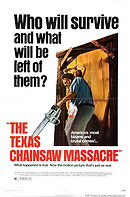
 1936
1936
 7.4
7.4
 7.5
7.5


